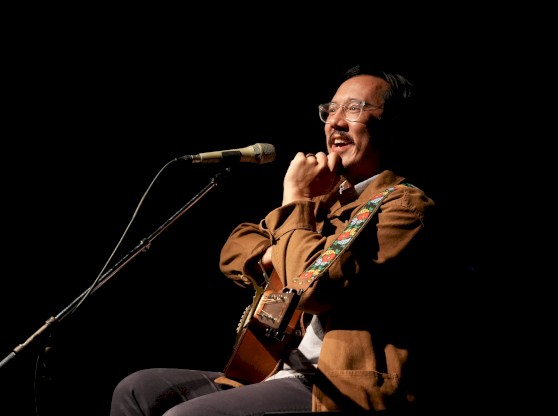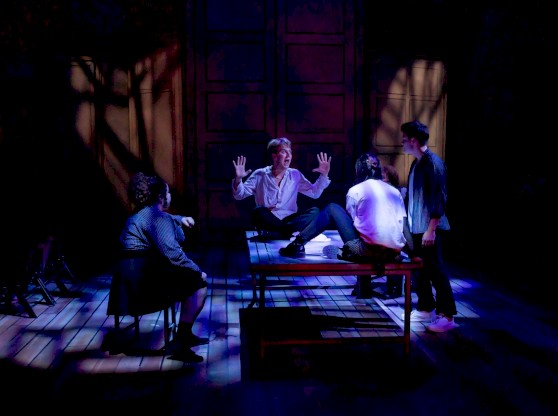There are few — if any — people in the world who know as much about Florida’s art history as Gary Libby, a University of Florida alumnus who has dedicated his life to studying it.
Born in Boston, Massachusetts in 1944, Libby might, at first glance, appear to be an unusual advocate for what he calls the “Florida School of Art.” However, Libby spent many of his formative years escaping the harsh Northeastern winters in Florida with his family, and it was during these trips that he developed his love for the state that would soon become his permanent home.
Libby first experienced Florida’s West Coast through a train window, as he took the railroad all the way from Grand Central Station to Tampa, and then down to Naples. Libby remembers this trip vividly: The sharp juxtaposition between the heavily populated northern states, and the natural Florida terrain, which had not yet undergone rapid industrialization.
“It’s a memory in the back of my mind that I always think of,” Libby reflected.
While studying English Literature at the University of Florida, Libby recalled attending exhibition openings at the brand new University Gallery, and never seeing a single Florida painting. At the time, the emphasis was placed on bringing in major European art to elevate the program. This conspicuous absence sparked Libby’s interest, and got him thinking about Florida art’s position (or, at the time, its lack thereof) in the larger artistic world.
As Florida was never a plantation state, its art varies significantly from that of its neighbors to the north. Libby always saw Florida as an exotic locale — at the end of the line for many railroad and steamship lines, and with distinct and tropical climates that separate it from any other state in the continental U.S. There were unique Spanish and French influences, as well as a rich connection to the Caribbean that has long influenced the state’s artistic style.
For the last 20 years, Libby has published books and articles advocating for the Florida School of Art as a distinct and significant movement. One of the most impressive and unique qualities of the best Florida paintings, according to Libby, is that the viewer can always tell which part of Florida is being represented, simply from the contents of the painting. It comes down to a number of qualities, including the biology, the botany, the physical features and the people.
But Florida art, like the state itself, was forever changed by the introduction of tourism into the state. According to Libby, “[The railroad] forever changed the Florida environment. The Cici and Hyatt Brown Museum [in Daytona Beach] has many paintings showing exquisite nature of Florida at sunset, for example. And chugging up the river comes a steamboat, belching smoke out of its smokestack, and they’re lighting their way with gas lanterns and the pristine beauty of the state is destroyed forever by progress.”
Before the railroads came in, Libby said, many people thought Florida looked like Eden before the fall. The art of this time incorporated supernatural and religious elements in very subtle ways. Naturally, then, contemporary Florida art often explores the dramatized effects of industrialization on the state’s once heaven-like landscape.
“Many people like to look at Florida paintings as what we’ve lost,” Libby explained. In that way, he expanded, Florida art can be used as a political tool, to warn against environmental harms like pollution and fracking.
The many and varied layers of the Florida School of Art made the perfect curriculum for “Light and Shadow: Exploring the Consciousness of Florida Art,” the 7-week course that Libby taught through the University Honors Program.
“Being asked to teach a course at UF, and coming back as an authority on Florida art, was a wonderful honor and a déjà vu experience,” Libby said.
By any measure, his course has been a huge success. His five students — the majority of whom are underclassmen STEM majors — have had their final papers published online at AskArt, and in the hard copy edition of the Artists’ Bluebook.
Their assignment was to select an artist, and then to conduct research to see if there was any public information on that artist and their role in the Florida School. The students were then tasked with developing a paper that brought new information on these artists forward — a task, Libby knew, that required hard work and dedication.
“Many of the great artists who came to Florida for some time returned up north, and there’s very little to know about their Florida visit, other than their paintings,” Libby explained.
Libby was blown away by the results: His students not only fulfilled the task he assigned, but did it so well that they enriched the Florida School of Art that he had so recently introduced to them. It was a chance for Libby to teach subject matter that he has dedicated his life to studying and defending — and, in the process, he learned something from his students, too.


